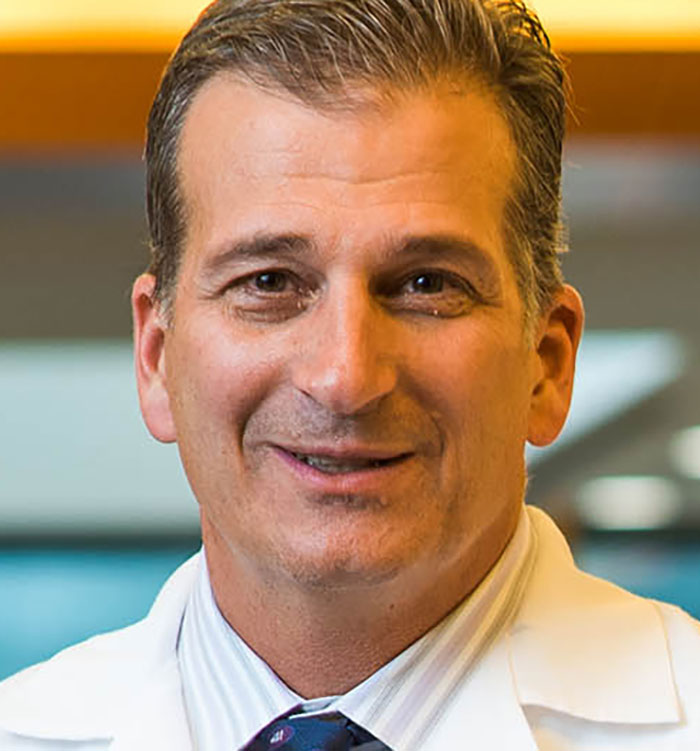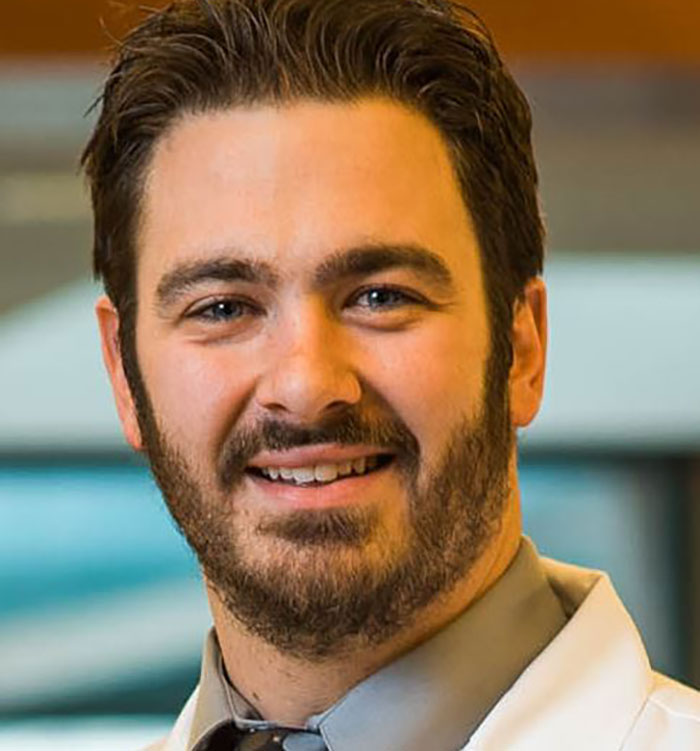Coordinated Trauma Care Saves Lives
November 30, 2017
Managing care for multiply injured patients in the trauma setting
UH Department of Orthopaedics - Winter 2018
 John Sontich, MD
John Sontich, MD Robert Wetzel, MD
Robert Wetzel, MDImagine a 25-year-old motorcyclist is involved in a crash. That patient could arrive at the hospital with a range of injuries, such as fractured tibia, a fractured femur, a collapsed lung and possibly a splenic injury.
The first hours are critical, when the immediate goal is to stabilize a patient. Trauma surgeons across multiple disciplines must work together to manage the patient and his injuries across multiple systems.
“The general trauma surgeons are the captains of the ship, but orthopaedic trauma surgeons usually do the most surgery on trauma patients,” says John Sontich, MD, Chief of Orthopaedic Trauma at University Hospitals Cleveland Medical Center and Associate Professor of Orthopaedics at Case Western Reserve University School of Medicine. “We make a plan together.”
That careful and swift coordination saves lives.
PERFECTING TRAUMA SERVICE COORDINATION
“How trauma surgeons coordinate trauma services has evolved over the years,” says Robert Wetzel, MD, Orthopaedic Traumatologist at University Hospitals Cleveland Medical Center and Assistant Professor of Orthopaedics at Case Western Reserve University School of Medicine. “There used to be a swing to fix everything as fast as possible. Then the pendulum swung the other way – nothing was definitively fixed right away. Everything was temporized.”
Trauma surgeons at UH and across the country are striving to strike the right balance by performing vital, life-saving surgeries as soon as possible, but delaying surgeries on a trauma patient who may not be immediately ready to undergo.
“Now, the pendulum is in the middle,” Dr. Wetzel says. “We decide which patients need damage control surgery and which need definitive surgery to maximize their chances for survival and recovery.”
The majority of trauma patients are otherwise healthy. Their lives are turned upside down by car crashes or workplace accidents. Effective trauma care cannot only save patients, it can help get them back to their normal lives faster.
When a patient has injuries across multiple systems, the surgeons involved in the case must execute coordinated decisions as quickly as possible. They must decide which procedures are most important and make sure the patient undergoes those procedures at the right time.
The motorcycle crash patient might have a fractured tibia, but how is that injury prioritized? Do any broken bones need to be stabilized so the patient can undergo a different procedure? For example, the orthopaedic surgeon may need to stabilize a fractured pelvis so the patient can undergo an abdominal surgery. A less serious injury, such as a small fracture, will be done after life-saving surgeries. The trauma team makes these decisions together, with surgeons from each specialty lending their expertise.
THE ROLE OF ORTHOPAEDIC TRAUMA SURGEONS
While general trauma surgeons are usually the first to operate on a patient – as is the case with the motorcycle crash victim – orthopaedic trauma surgeons occupy a unique position. Surgeons from other specialties may see a patient for little more than their initial admission to the hospital, but orthopaedic trauma surgeons stay closely involved in trauma patient care.
“We assist the general surgeon or neurosurgeon with the damage control situation, but we are also involved in definitive care, which may take place days or weeks later,” Dr. Wetzel explains.
Orthopaedic trauma surgeons also lead the team working to get patients mobile as soon as possible. The longer patients stay in a hospital bed after a trauma, the more vulnerable they become to additional complications. Beyond that, the residual effects of bone injuries can last a lifetime. Orthopaedic surgeons may see trauma patients years into their recovery process.
Trauma is a critical service arm for healthcare systems and hospitals. Having a skilled team of trauma surgeons across multiple specialties, including orthopaedics, is incredibly valuable.
“Trauma is the No. 1 cause for loss of productive working years because it can lead to long-term disabilities –even in young patients,” Dr. Sontich notes. “Surviving the critical hours after the initial event, and reconstructing the orthopaedic injuries with expertise, can restore patients to normal functional outcomes and, ultimately, allow them to lead happy and productive lives. “
Learn more about University Hospitals Trauma and Fracture Division.


